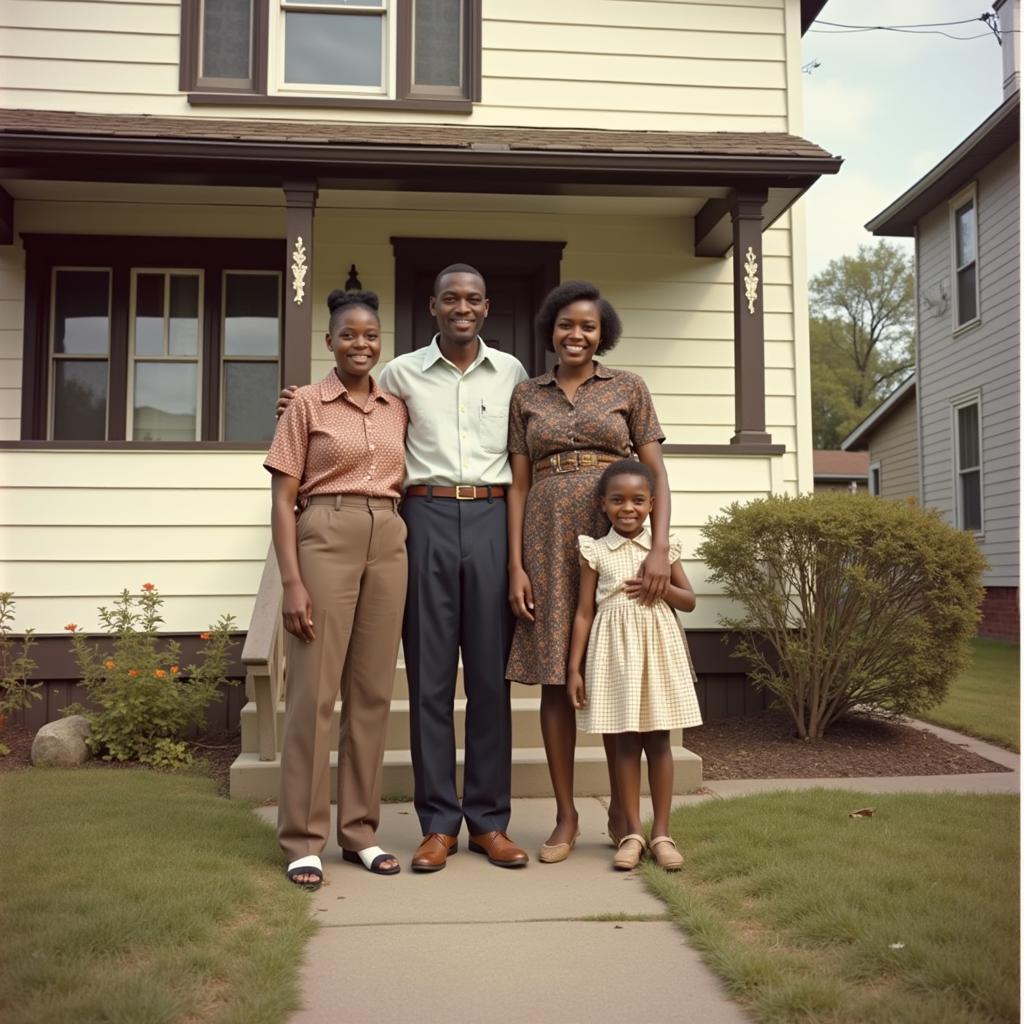The Great Migration: African American Migration to the North
The early 20th century witnessed a pivotal moment in African American history: the Great Migration. Between 1916 and 1970, millions of African Americans left the rural South for urban centers in the North and West, seeking better opportunities and a reprieve from the pervasive Jim Crow segregation. This mass movement reshaped the demographic landscape of the United States and had a profound impact on African American culture, politics, and society.
The Push and Pull of the Great Migration
The Great Migration was driven by a complex interplay of “push” and “pull” factors. In the South, African Americans faced relentless racial discrimination, limited economic opportunities, and widespread violence. Jim Crow laws enforced segregation in all aspects of life, from education and housing to transportation and public accommodations. Lynchings and other forms of racial terrorism created a climate of fear and oppression.
The North, while not a utopia of racial equality, offered the promise of better jobs, higher wages, and greater social and political freedom. The rise of industrial cities like Chicago, Detroit, New York, and Philadelphia created a demand for labor, particularly during World War I when European immigration slowed.
 African Americans Boarding Train North
African Americans Boarding Train North
Life in the Northern Cities: Challenges and Opportunities
The reality of life in the North was often a mixed bag for African American migrants. While they found more economic opportunities, they also faced new challenges:
- Housing Discrimination: Finding affordable housing proved difficult as many landlords refused to rent to African Americans, leading to the growth of overcrowded urban neighborhoods.
- Job Competition: While industrial jobs were available, competition with white workers and newly arrived European immigrants was fierce.
- Racial Prejudice and Violence: Although less overt than in the South, racism persisted in the North, manifesting in segregated neighborhoods, discriminatory hiring practices, and occasional racial violence.
Despite these challenges, African Americans persevered and built vibrant communities in their new homes. Churches, social clubs, and cultural institutions provided support, fostered a sense of belonging, and celebrated African American identity.
 African American Family in Northern City
African American Family in Northern City
The Legacy of the Great Migration
The Great Migration had a profound impact on American society:
- Transformation of Urban Landscapes: The influx of African Americans transformed the demographic makeup of Northern cities, leading to the growth of vibrant African American neighborhoods and cultural centers.
- Rise of the Black Middle Class: New economic opportunities allowed some African Americans to climb the socioeconomic ladder, contributing to the emergence of a Black middle class.
- The Civil Rights Movement: The concentration of African Americans in urban centers provided a critical mass for political organizing and activism, laying the groundwork for the Civil Rights Movement.
The Great Migration remains a pivotal event in African American history. It speaks to the resilience of a people determined to overcome adversity and create a better future for themselves and their descendants. The cultural and political shifts brought about by this mass movement continue to shape the American experience today.
FAQ about the Great Migration
1. What were the main causes of the Great Migration?
The primary causes were Jim Crow segregation, limited economic opportunities, and racial violence in the South, coupled with the promise of better jobs, higher wages, and greater freedom in the North.
2. What impact did the Great Migration have on the South?
The mass exodus of African Americans from the South had a significant economic impact, leading to labor shortages in some areas. It also contributed to the slow decline of the Jim Crow system as the South faced increasing pressure to address racial inequality.
3. How did the Great Migration affect the development of African American culture?
The Great Migration led to a flourishing of African American arts, music, and literature in Northern cities. It was during this period that the Harlem Renaissance, a pivotal moment in Black cultural expression, took place.
4. What were some of the challenges faced by African Americans who migrated North?
Migrants encountered housing discrimination, job competition, and persistent racial prejudice, albeit in different forms than they experienced in the South.
5. How did the Great Migration contribute to the Civil Rights Movement?
The concentration of African Americans in urban centers facilitated political organizing and activism. The NAACP, founded in 1909, played a crucial role in advocating for civil rights, and the Great Migration provided a larger base for the organization’s efforts.
Need help tracing your family history or understanding more about the African Diaspora? Contact us at +255768904061, email us at kaka.mag@gmail.com, or visit us at Mbarali DC Mawindi, Kangaga, Tanzania. Our team is available 24/7 to assist you.

